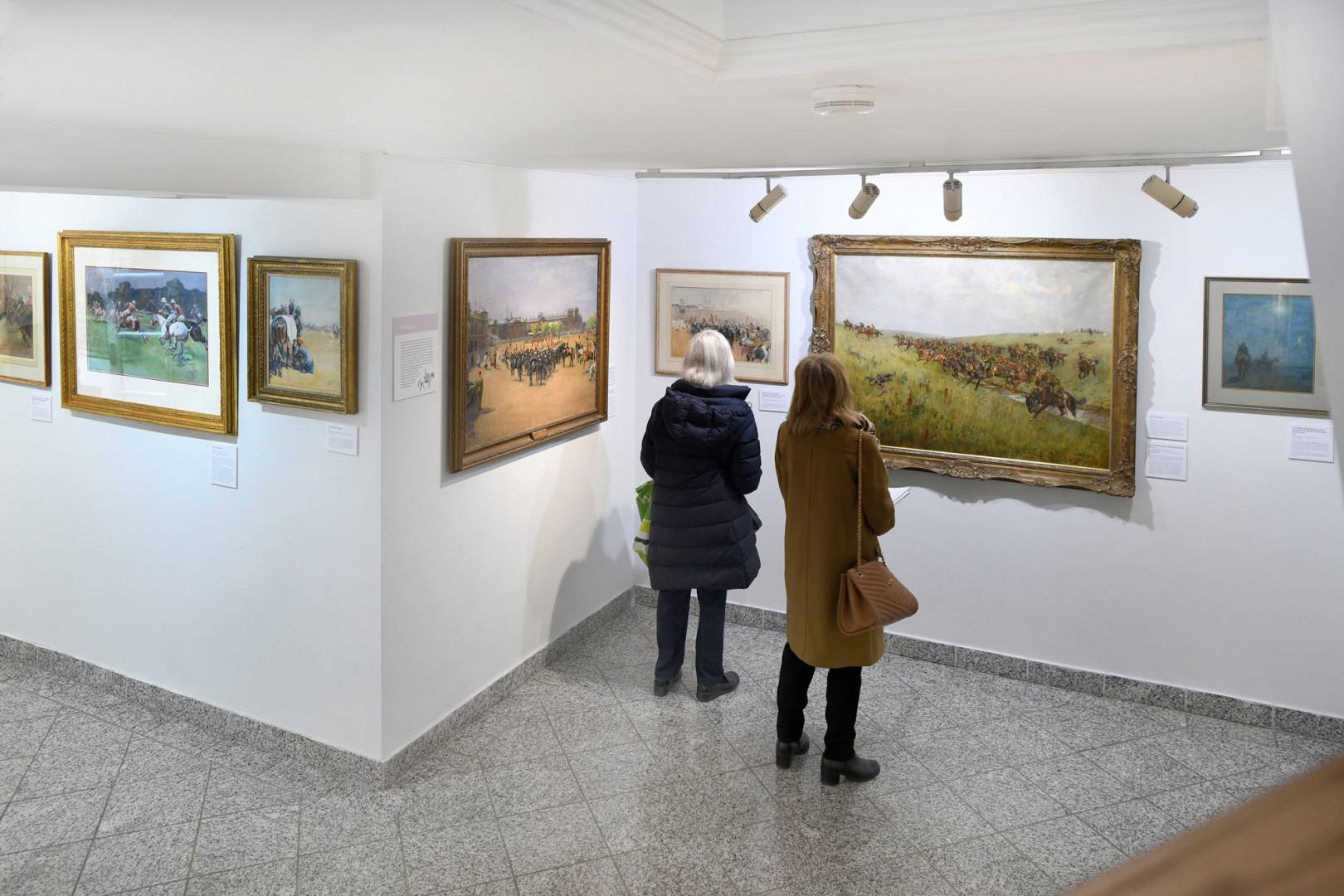A to Z of artists Howitt, Samuel 1756 - 1822
Samuel was a painter, of primarily watercolours, and an etcher. Son of the painter Thomas Howitt, the fifth of six children and probably born in Staining. The family would appear to have been of some wealth and importance for several generations. He had no formal training but moved in artistic circles that included George Morland and Thomas Rowlandson, whose sister Elizabeth he married in 1779. They are recorded as living in Chigwell, Essex for some time.
Howitt indulged in most forms of sport and entertained well, sketching for pleasure and generally living on the inherited family fortune. In such circumstances the money did not last forever and he had to move back to London to find a job. With the help of his friend, the famous riding master Henry Angelo, he obtained the position of drawing master at Dr. Goodenough’s Academy in Ealing. He failed to appear at the Academy on frequent occasions and so he and Dr. Gooenough parted company. His unreliability (similar to that of his friends Morland and Rowlandson, who were all heavy drinkers and gamblers) disrupted his marriage and he and Elizabeth parted. He obviously held no grudge against his wife as he left her provided for in his will. He died at Somers Town in London.
Despite Howitt’s love of the reckless life he had a tremendous artistic output not only as a painter but as an excellent etcher and he produced a large number of sporting prints, many in large sets, such as his most famous – ‘Orme’s collection of British Field Sports’, and a set entitled ‘Oriental Field Sports’, which depicted scenes of the chase in India. From this, many past historians assumed he had spent some time in India. There is no evidence whatsoever to corroborate this, but it is definitely known that these Indian scenes were made from sketches made in India by Captain T. Williamson (1759 – 1817). Howitt painted many different types of sporting scenes.
As well as prints Howitt also illustrated a number of books, one of the most important being ‘The British Sportsman’, 1799/1800 containing seventy-two plates; he also illustrated Beckford’s ‘Thoughts on Hunting’ and contributed 157 plates to ‘The Sporting Magazine’.
The majority of Howitt’s work was in watercolour and the few oils that exist show that he never really mastered the latter art. His landscapes and trees were beautifully painted, his trademark being the large fern-like leaves in the foreground of many of his paintings. His riders, both jockeys and huntsmen, are all rather tall. His horses frequently have more humorous and expressive faces than their riders, and although varying in colour are all very similar, having well rounded crests and quarters and exaggerated nostrils. His hounds also display considerable similarity of stance. Howitt was, despite these criticisms, one of the most delightful sporting watercolourists of the eighteenth and nineteenth centuries.
Source: The Dictionary of British Equestrian Artists by Sally Mitchell (1985), published by the Antique Collectors’ Club.
Howitt indulged in most forms of sport and entertained well, sketching for pleasure and generally living on the inherited family fortune. In such circumstances the money did not last forever and he had to move back to London to find a job. With the help of his friend, the famous riding master Henry Angelo, he obtained the position of drawing master at Dr. Goodenough’s Academy in Ealing. He failed to appear at the Academy on frequent occasions and so he and Dr. Gooenough parted company. His unreliability (similar to that of his friends Morland and Rowlandson, who were all heavy drinkers and gamblers) disrupted his marriage and he and Elizabeth parted. He obviously held no grudge against his wife as he left her provided for in his will. He died at Somers Town in London.
Despite Howitt’s love of the reckless life he had a tremendous artistic output not only as a painter but as an excellent etcher and he produced a large number of sporting prints, many in large sets, such as his most famous – ‘Orme’s collection of British Field Sports’, and a set entitled ‘Oriental Field Sports’, which depicted scenes of the chase in India. From this, many past historians assumed he had spent some time in India. There is no evidence whatsoever to corroborate this, but it is definitely known that these Indian scenes were made from sketches made in India by Captain T. Williamson (1759 – 1817). Howitt painted many different types of sporting scenes.
As well as prints Howitt also illustrated a number of books, one of the most important being ‘The British Sportsman’, 1799/1800 containing seventy-two plates; he also illustrated Beckford’s ‘Thoughts on Hunting’ and contributed 157 plates to ‘The Sporting Magazine’.
The majority of Howitt’s work was in watercolour and the few oils that exist show that he never really mastered the latter art. His landscapes and trees were beautifully painted, his trademark being the large fern-like leaves in the foreground of many of his paintings. His riders, both jockeys and huntsmen, are all rather tall. His horses frequently have more humorous and expressive faces than their riders, and although varying in colour are all very similar, having well rounded crests and quarters and exaggerated nostrils. His hounds also display considerable similarity of stance. Howitt was, despite these criticisms, one of the most delightful sporting watercolourists of the eighteenth and nineteenth centuries.
Source: The Dictionary of British Equestrian Artists by Sally Mitchell (1985), published by the Antique Collectors’ Club.
Other works of art you may be interested in
From the library
| Shelf No Year |
Title Author |
Publisher Notes |
|---|---|---|
| D/How/1 |
The British Sportman Howitt, Samuel |
Copyright © 2025 BSAT, All rights reserved
This website uses cookies and similar technologies to give you the very best user experience, including to personalise advertising and content. By clicking 'Accept', you accept all cookies.




